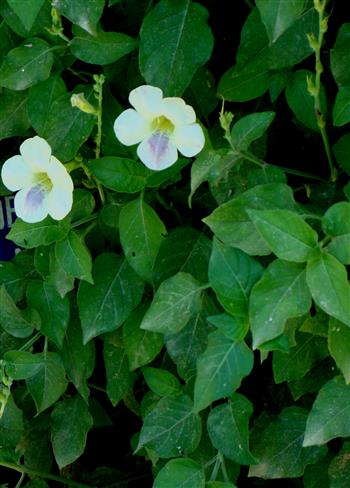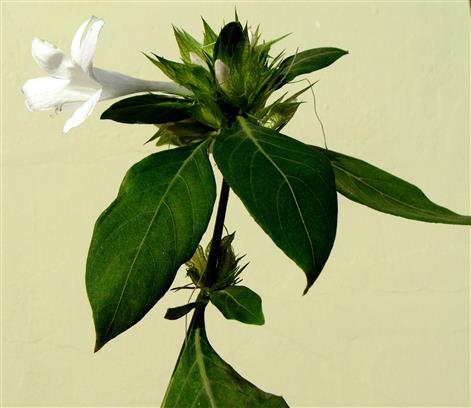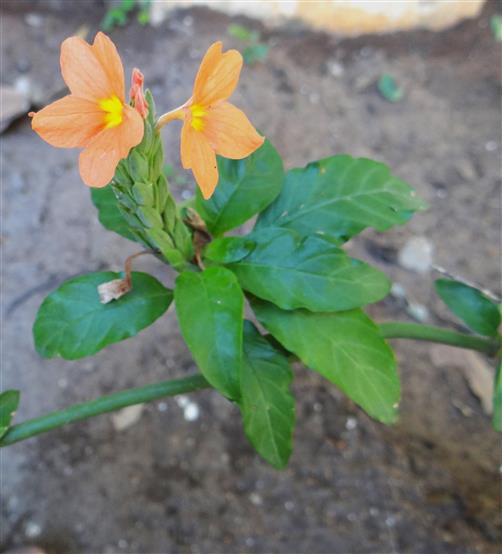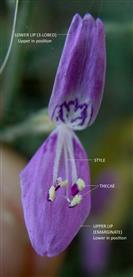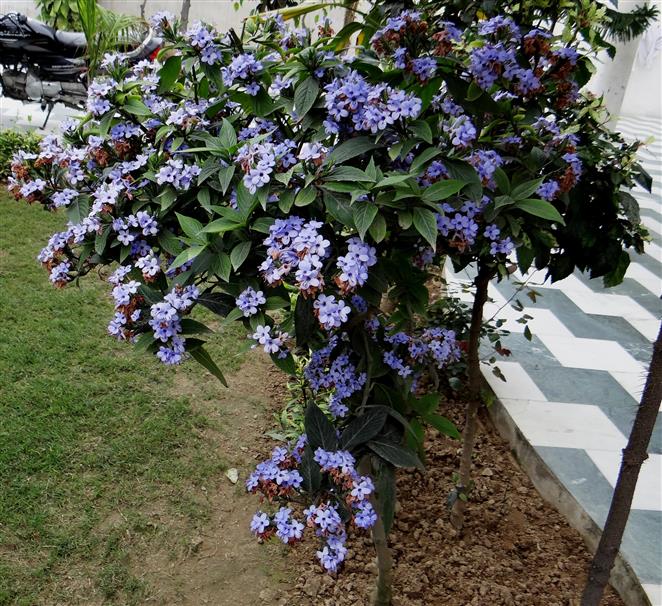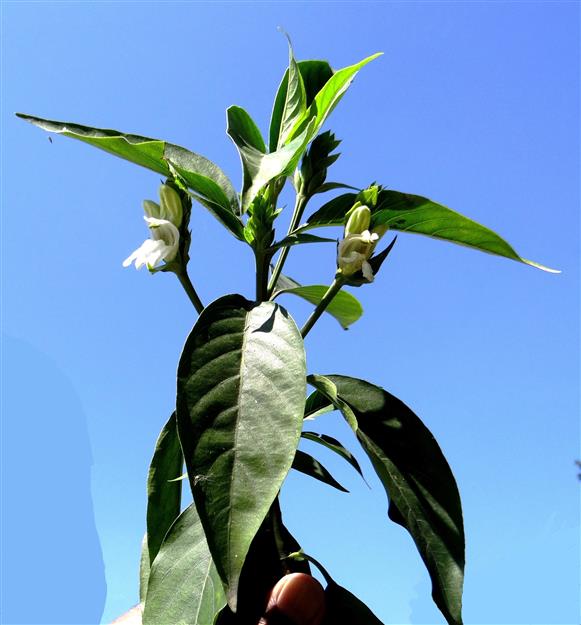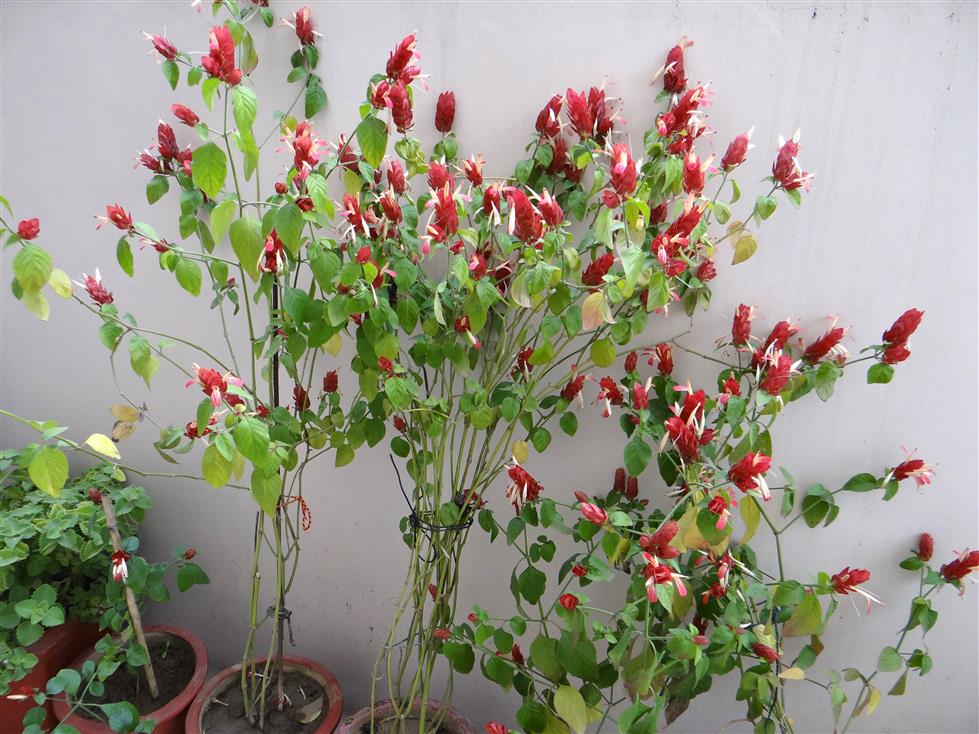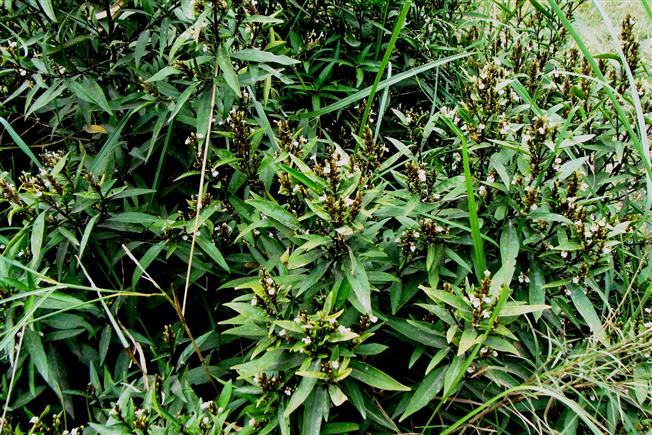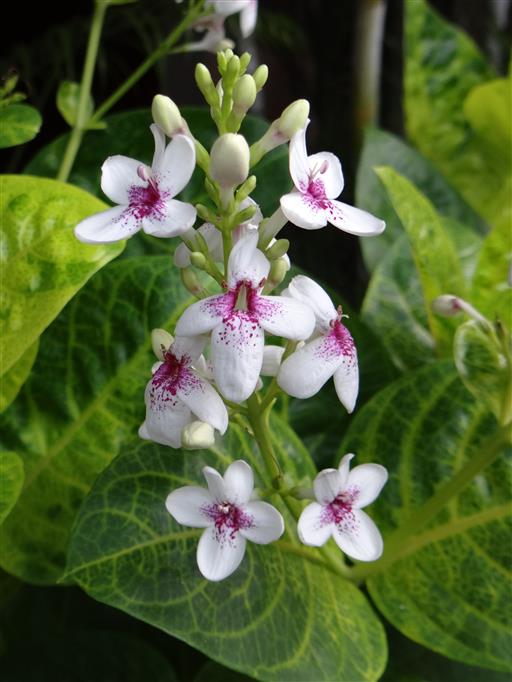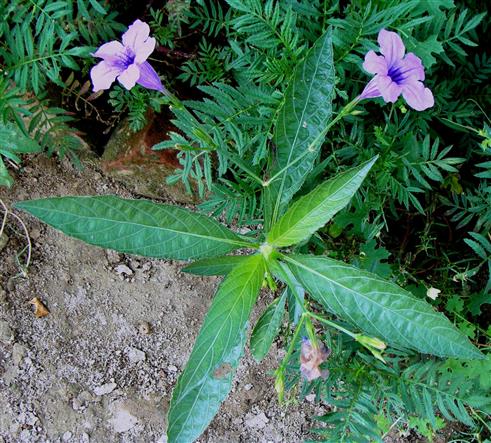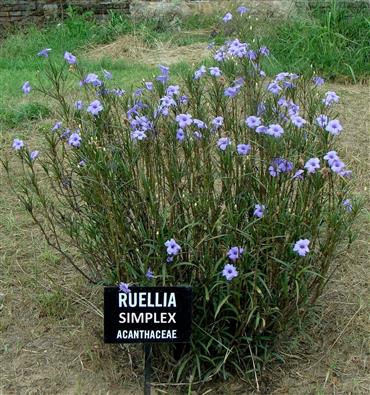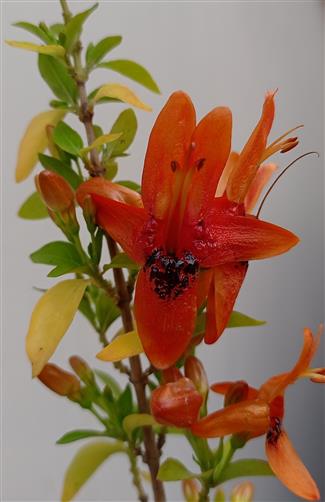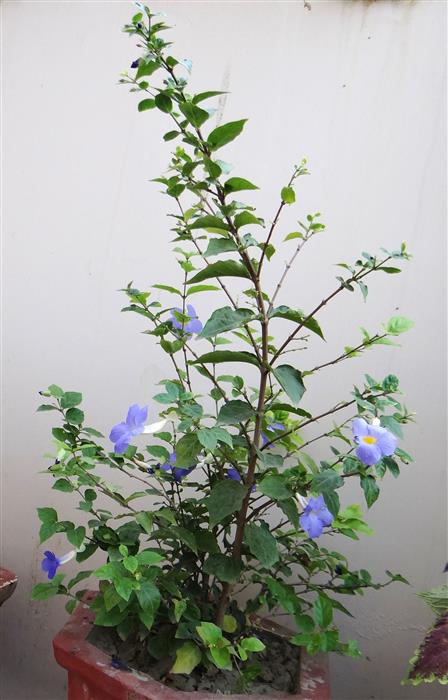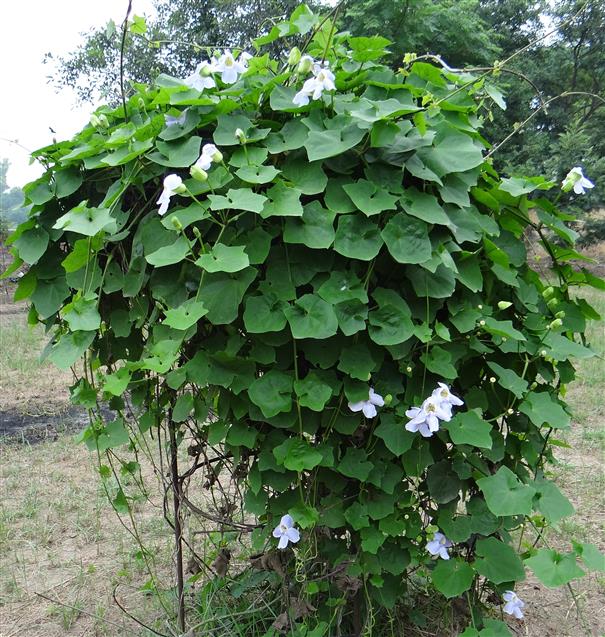ACANTHACEAE
Perennials, sometimes annual, suffrutescent; prostrate or erect herbs, shrubs, rarely trees or climbers; usually with cystoliths. Branches decussate, terete to angular, nodes often swollen, sometimes spinose. Leaves exstipulate, simple, opposite, rarely whorled; leaf blade variable. Inflorescence commonly dichasial cymes becoming monochasial, often in dense to lax terminal or axillary spikes, racemes, panicles or of dense clusters; rarely of solitary flowers. Bracts 1, 2 or more, often large and brightly coloured, imbricate and persistent or minute and green, sometimes becoming spinose or absent. Bracteoles usually 2, sometimes enclose the flowers. Flowers sessile or pedicellate, bisexual, usually zygomorphic, hypogynous. Sepals connate, at least basally, 4- or 5-lobed, sometimes more lobed or reduced to entire cupulate ring, persistent. Petals 5, connate; tube cylindrical or ventricose (swelling out in the middle or on one side),; limb of 5 lobes, lobes subequal and spreading or strongly 2-lipped: upper lip erect or suberect, entire or 2-fid, rarely absent or fimbriate; the lower lip more spreading, 3-fid or 3-lobed, lobes imbricate or contorted. Stamens 4 and didynamous or 2, inserted on corolla tube, ascending below the upper lip; anthers dorsifixed, usually unequal in stamen pair, generally bithecous, occasionally monothecous, thecae parallel, divergent or superposed, base muticous or spurred, sometimes bearded, dehiscence longitudinal. Staminodes 0-3, consisting of minute projections or sterile filaments. Disk almost always present at base of ovary, often very small, annular and nectar producing. Carpels 2, syncarpous; ovary conical or oblong-cylindric, superior, 2-locular, ovules 2-many in each loculus, placentation mostly axile; style simple, filiform; stigmas 1 or 2, minute. Fruit a bivalved, 2-celled, +/- stipitate capsule, capsule clavate to elliptic-ovoid or oblong-cylindric; elastically dehiscent from apex downwards. Seeds usually orbicular, compressed, in most genera attached to curved or hook-like hardened persistent support, the retinacula, sometimes called Jaculator, (a modified funiculus).
206 genera and about 2500 species
